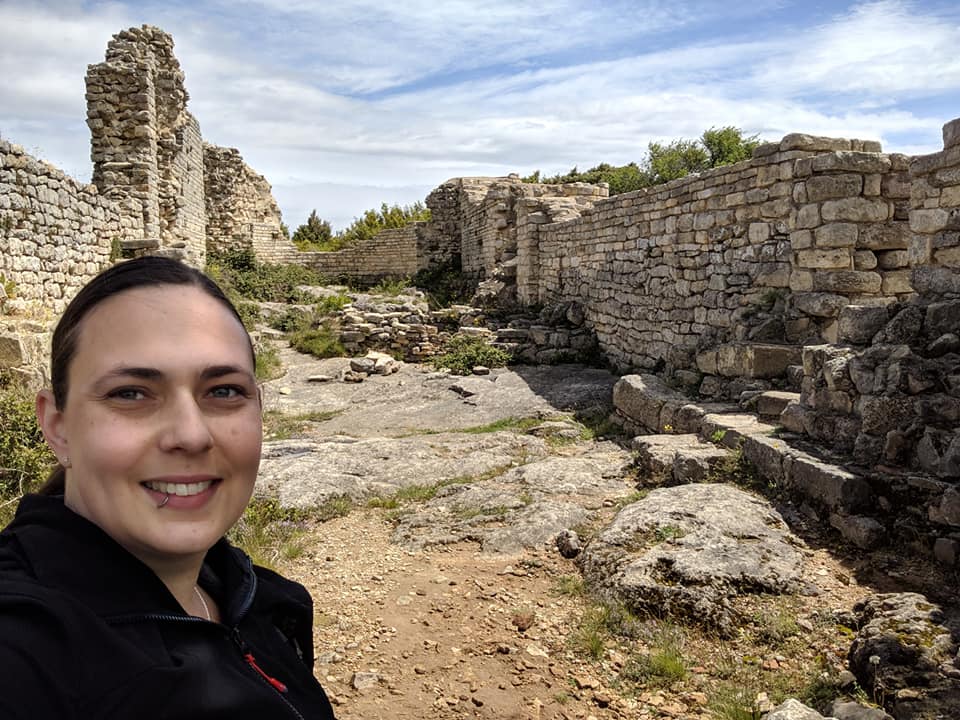Medieval Bones Reveal Diet Secrets

Jane Holmstrom doesn’t speak medieval French, but that hasn’t stopped her from learning from the long-dead residents of Saint-Jean-de-Todon in Laudun, France.
The bioarchaeology doctorate student traveled at the beginning of May to an archaeological site about 90 minutes northwest of the Mediterranean city of Marseilles. The site sits on a hill just above the town of Laudun, and commands a strategic viewpoint of the surrounding countryside. Its history includes use as Julius Caesar’s camp, a church and a burial ground.
Through a partnership with professor Yann Ardagna, Ph.D., and Aix-Marseilles University, Holmstrom will study the diet and migration patterns of 9th-13th century individuals. She will also explore the impact of religious pilgrimages to neighboring Spain. The data from her study will be compared to other Medieval sites in western Europe.
 “The individuals from this time period and location in France have not been studied using stable isotope analysis, particularly higher status individuals, so I’m excited to see what this research reveals,” Holmstrom says.
“The individuals from this time period and location in France have not been studied using stable isotope analysis, particularly higher status individuals, so I’m excited to see what this research reveals,” Holmstrom says.
Stable isotope analysis allows researchers to extrapolate a person’s typical diet by examining the carbon and nitrogen buildup in the bones.
In addition to the bone samples, Holmstrom helped build bridges between UCF, Aix-Marseille University in Marseille and the town of Laudun. Holmstrom expects the research to take several years to complete.
